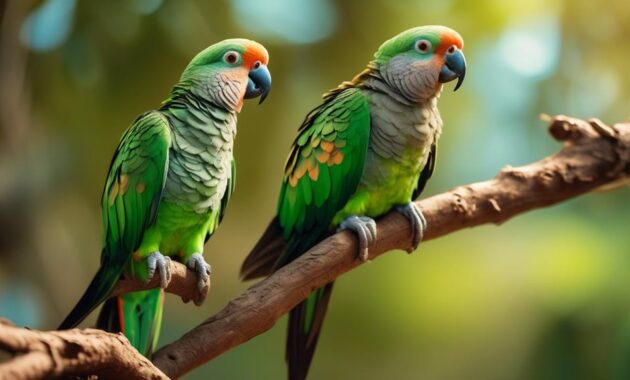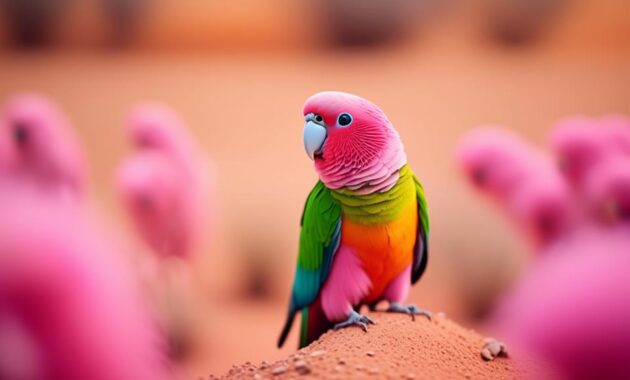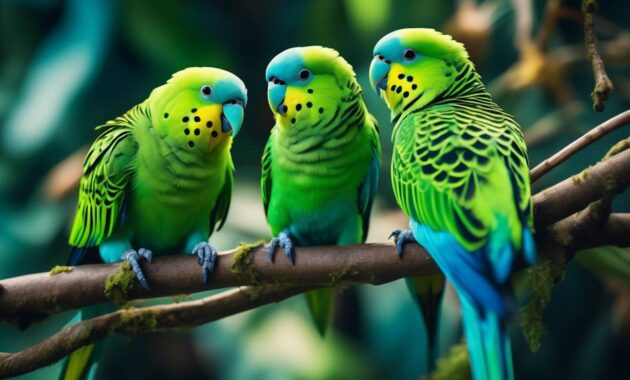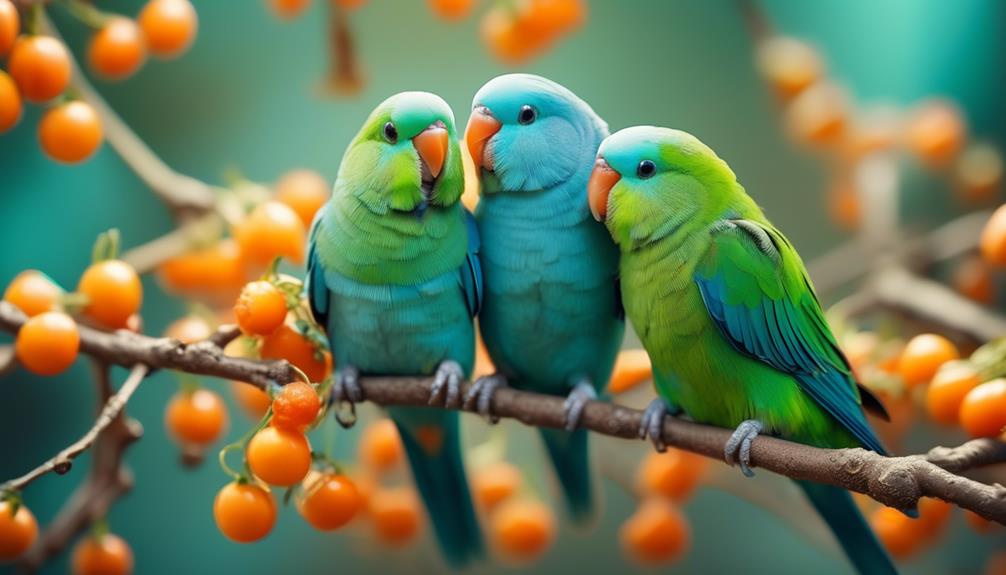
Have you ever wondered if there is a world of enchantment hidden within the tiny and charming Blue Winged Parrotlets?
These captivating creatures have garnered quite a reputation for their unique qualities and stunning appearance. With their petite size and delicate features, it’s hard not to be curious about what makes them so special.
But there’s more to these birds than meets the eye. As you delve into the realm of Blue Winged Parrotlets, you’ll uncover a world of fascinating facts and intriguing behaviors that will leave you wanting to know more.
So, let’s embark on this journey together and discover the secrets of these delightful creatures.
Key Takeaways
- Blue Winged Parrotlets are small in size, measuring around 5 inches in length and weighing approximately 1 ounce.
- With proper care and a balanced diet, Blue Winged Parrotlets can live for 20-30 years.
- Despite their small size, they require a roomy cage for exercise and mental stimulation.
- Blue Winged Parrotlets have a predominantly light green body with blue flight feathers, making them visually appealing. Females lack blue colors.
Size and Lifespan of Blue Winged Parrotlets
Blue Winged Parrotlets, measuring approximately 5 inches in length and weighing around 1 ounce on average, have a lifespan of 20-30 years with proper care and a balanced diet. Despite their small size, they require a roomy cage for exercise. Regular interaction, mental stimulation, and veterinary check-ups are crucial for their overall well-being and longevity.
Blue Winged Parrotlets belong to the Parrotlet family and possess all the characteristics of a typical parrot, despite being one of the smallest parrot species. Their predominantly light green body, with a darker back and lighter front, is complemented by deep blue flight feathers and small patches on their wings. Females lack blue colors, as this breed is sexually dimorphic.
With their low noise levels, they’re suitable for apartment living. Taking care of these tiny and charming birds is easy due to their small size, but providing a safe and stimulating environment is essential.
Bird Species and Characteristics
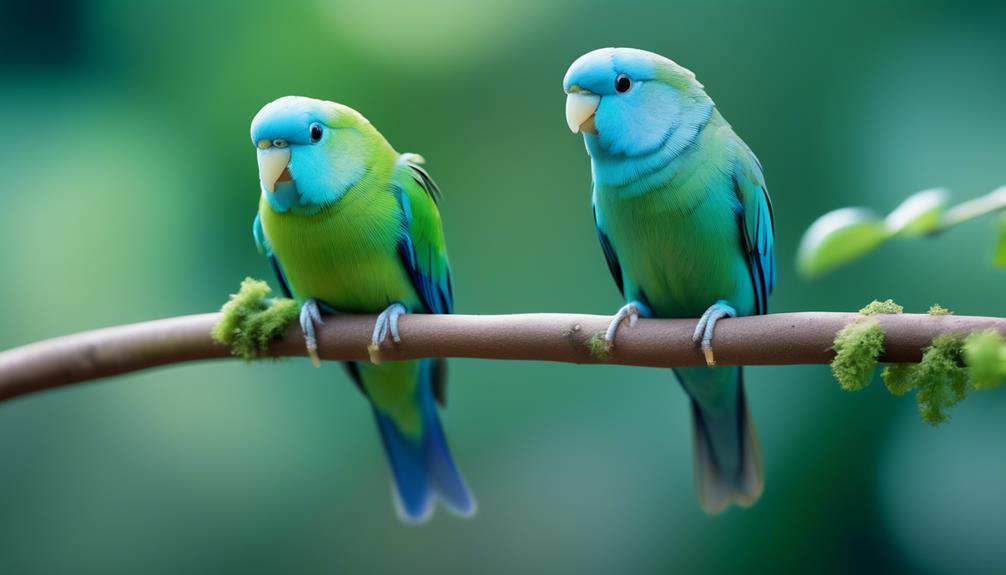
One of the smallest parrot species, the Blue Winged Parrotlets possess all the characteristics of a typical parrot. They belong to the Parrotlet family and are closely related to other parrotlet breeds.
Despite their small size, they’ve a playful nature and are known for their vibrant colors. Blue Winged Parrotlets have a predominantly light green body with deep blue flight feathers and small patches on their wings. This breed is sexually dimorphic, with females lacking blue colors.
In terms of sounds, they’ve low noise levels and produce squeaky, piercing calls. Blue Winged Parrotlets are easy to care for and handle due to their small size, but they still require a safe and stimulating environment for their well-being.
Colors and Appearance of Blue Winged Parrotlets
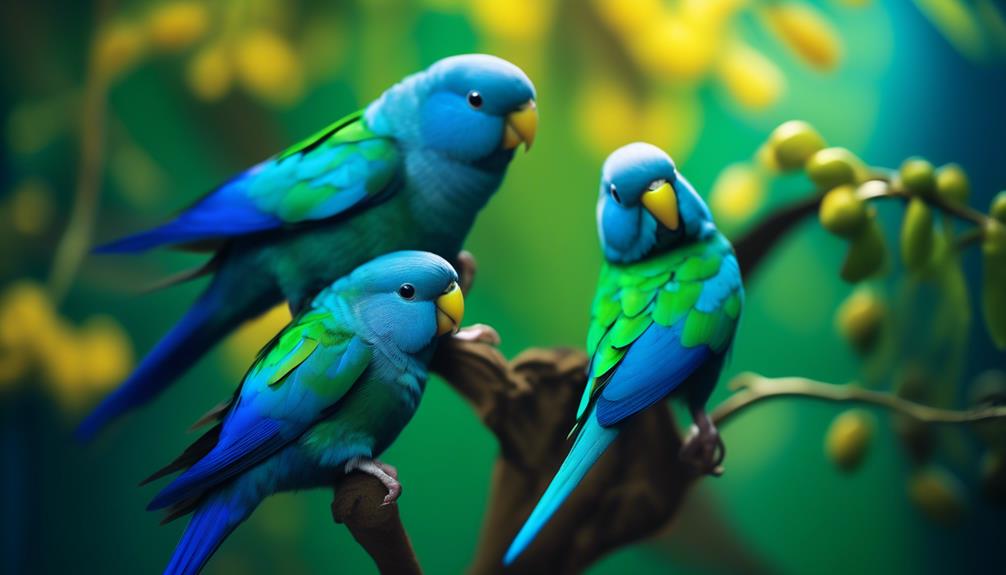
The vibrant colors and appearance of Blue Winged Parrotlets are visually appealing and captivating. These petite parrots have a predominantly light green body, with a darker back and a lighter front. Their wings feature small patches of deep blue, which adds a stunning contrast to their overall coloration.
One interesting fact about Blue Winged Parrotlets is their sexual dimorphism, where females lack the beautiful blue colors seen in males. Despite this difference, both males and females possess a simple yet elegant coloration that’s sure to catch anyone’s eye.
Whether it’s their green body or their striking blue flight feathers, Blue Winged Parrotlets are truly a sight to behold.
Sounds of Blue Winged Parrotlets
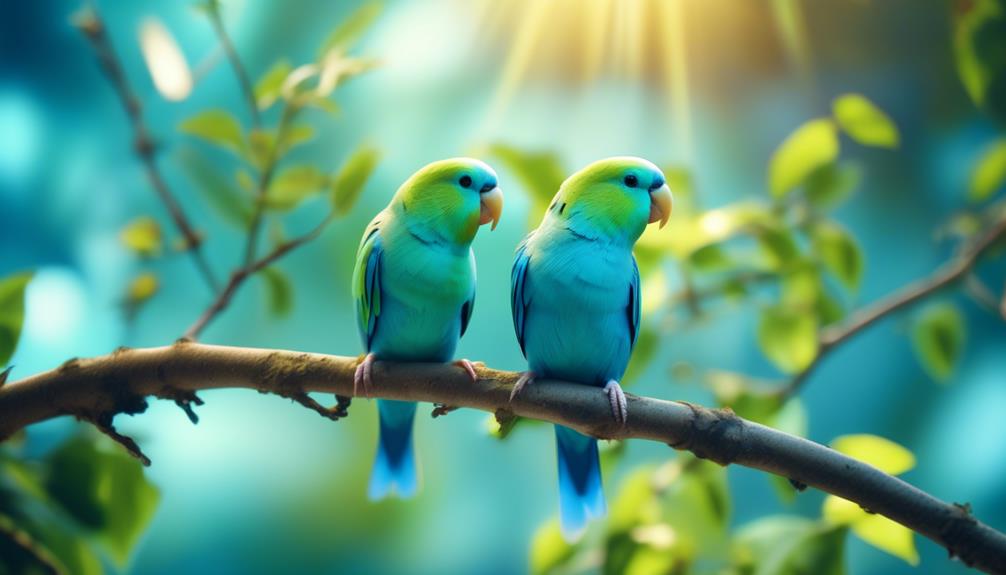
Listen closely to the enchanting sounds of the petite and playful Blue Winged Parrotlets. Despite their small size, these parrotlets aren’t known for being too loud. Their low noise levels make them suitable for apartment living.
When it comes to vocalizations, Blue Winged Parrotlets produce squeaky, piercing calls that are natural to their species. They may also repeat a few simple words in a cartoonish and mumbled way. While their sounds may not be as diverse or complex as larger parrots, Blue Winged Parrotlets find other ways to bring entertainment into the home.
Care and Handling of Blue Winged Parrotlets
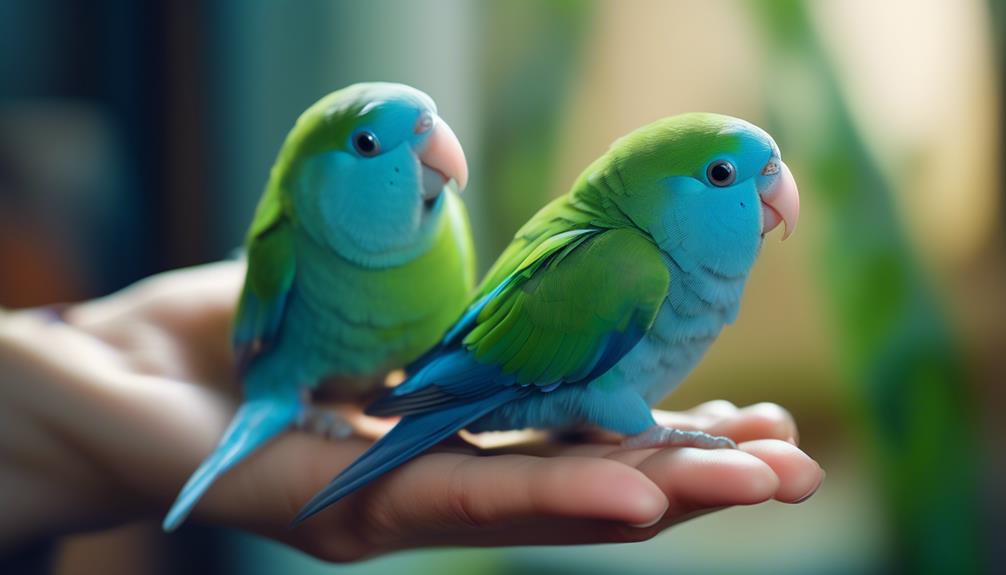
To properly care for and handle Blue Winged Parrotlets, it is important to provide them with a safe and stimulating environment. Here are some essential aspects of care and handling for these charming birds:
| Aspect | Description |
|---|---|
| Housing | Provide a roomy cage to allow for exercise despite their small size. |
| Diet | Offer a balanced diet consisting of high-quality pellets, fresh fruits, vegetables, and occasional treats. |
| Interaction and Stimulation | Regular interaction and mental stimulation contribute to their overall well-being and prevent boredom. |
| Veterinary Care | Schedule regular check-ups with an avian veterinarian to ensure their health and detect any potential issues. |
Creating a Safe and Stimulating Environment
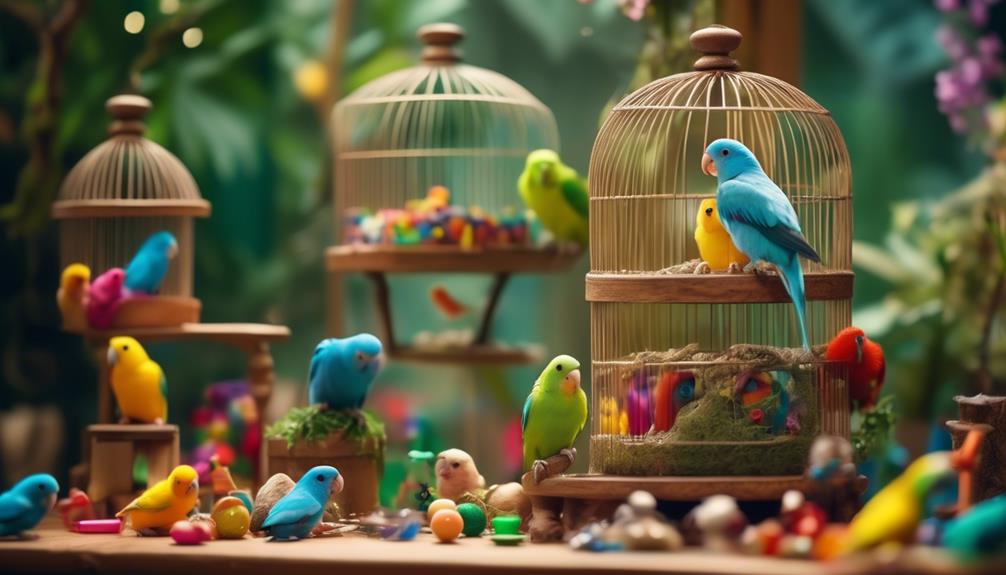
To ensure the well-being and happiness of your Blue Winged Parrotlets, it’s important to create a safe and stimulating environment for them. Here are some key factors to consider:
- Cage Size: Provide a roomy cage that allows for exercise and movement despite their small size.
- Mental Stimulation: Offer a variety of toys, puzzles, and interactive objects to keep them mentally engaged and entertained.
- Social Interaction: Spend quality time with your parrotlets, engaging in activities like training, playtime, and socializing.
- Environmental Enrichment: Create a stimulating environment by incorporating natural perches, different textures, and hiding spots to mimic their natural habitat.
Regular Veterinary Check-ups for Blue Winged Parrotlets
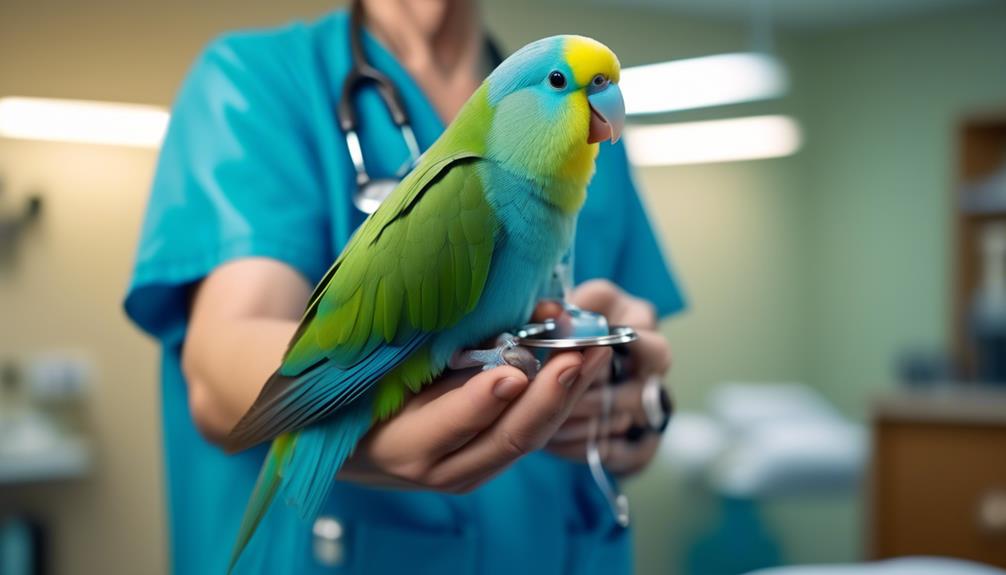
Regular veterinary check-ups are essential for the health and well-being of your Blue Winged Parrotlets. Just like any other pet, these tiny and charming birds require regular medical attention to ensure they stay healthy and happy.
During these check-ups, a veterinarian will assess your parrotlet’s overall health, check for any signs of illness or disease, and provide necessary vaccinations. They’ll also examine their beak, wings, and nails to ensure they’re in good condition.
Regular check-ups allow for early detection of any potential health issues, which can be crucial in preventing further complications. Additionally, your veterinarian can provide you with important information and guidance on proper nutrition, grooming, and general care for your Blue Winged Parrotlets.
Frequently Asked Questions
What Is the Average Size of a Blue Winged Parrotlet?
The average size of a blue winged parrotlet is about 5 inches. They may be small, but they possess all the characteristics of a typical parrot.
How Long Do Blue Winged Parrotlets Typically Live?
Blue Winged Parrotlets typically live for 20-30 years when given proper care and a balanced diet. With regular interaction, mental stimulation, and veterinary check-ups, you can ensure their overall well-being and longevity.
Do Blue Winged Parrotlets Have Any Unique Characteristics Compared to Other Parrot Breeds?
Blue Winged Parrotlets have unique characteristics compared to other parrot breeds. Despite their small size, they possess all the traits of a typical parrot. They are playful, have simple and elegant coloration, and produce low noise levels.
Can You Describe the Coloration and Appearance of a Blue Winged Parrotlet?
Blue Winged Parrotlets have a light green body with a darker back and lighter front. They have deep blue flight feathers and small patches on their wings. Females lack blue colors. Their simple and elegant coloration is visually appealing.
Are Blue Winged Parrotlets Known for Making Loud or Quiet Sounds?
Blue Winged Parrotlets are known for making low noise levels due to their small size. They produce squeaky, piercing calls and may mimic a few simple words. Their sounds are not too loud, making them suitable for apartment living.
What Makes Blue Headed Racket Tail Parrots Similar to Blue Winged Parrotlets?
The blue headed racket tail parrot and the blue winged parrotlet share the similarity of having vibrant blue feathers. Both species are known for their stunning blue coloration, which makes them popular choices for bird enthusiasts. Additionally, they exhibit similar playful and sociable behaviors, making them beloved pets for many bird lovers.
Conclusion
In conclusion, Blue Winged Parrotlets are a delightful addition to any bird lover’s life. Their small size and charming personality make them a joy to be around. Their beautiful appearance, low noise levels, and playful nature make them suitable for apartment living. With proper care and a balanced diet, they can live a long and fulfilling life of 20-30 years. So, if you’re ready for the enchanting world of Blue Winged Parrotlets, get ready to be captivated by these tiny wonders.


